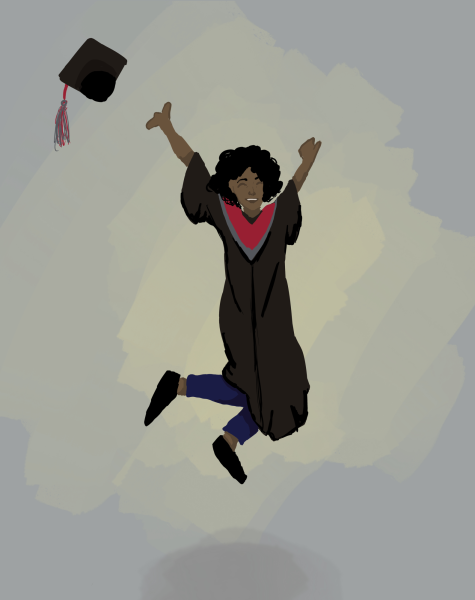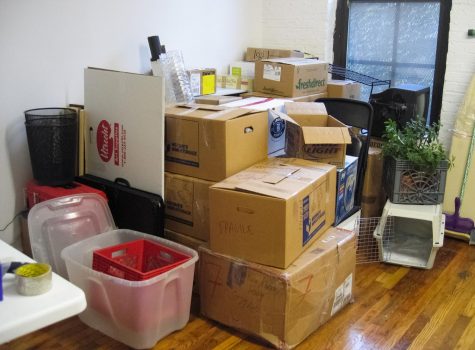Fashion: Your world and mine
September 30, 2015
When I tell people I’m majoring in apparel design, they often respond with, “And minoring in underwater basket weaving?” or “How will that lead to a job?”
It seems to me people have no idea of how prevalent fashion and the apparel industry is in their lives. Fashion affects the job market, the environment and captures our cultural zeitgeist.
Firstly, I’d like to address some of the general public’s response to my major. Yes, I suppose I did study some form of underwater weaving in my classes. But just so you know, swimwear is typically a knitted, not woven, textile. And yes, it is difficult to get to a job in the fashion industry. Even though the fashion industry employed 1,402,300 Americans in August of 2015, according to the Bureau of Labor Statistics, the need for fashion designers is estimated to shrink 3 percent from 2012 to 2022.
But just because fashion can be a little silly and hard to get into does not mean it’s unimportant.
There is a scene in the movie “The Devil Wears Prada” that captures this misperception of fashion perfectly. Anne Hathaway plays the role of a level-headed girl who stumbles upon the chance to be an assistant at a fashion magazine. While in a meeting with the magazine editor, Hathaway scoffs out loud about the decision between two similar belts. The editor of the magazine, Meryl Streep, miffed at Hathaway’s reaction, explains the role of fashion in society. Taking a jab at Hathaway’s attire, which to her is likely sensible and anti-fashion, Streep says the blue sweater was probably purchased at a thrift store, but the color was inspired by the collections of designers seasons prior.
“That blue represents millions of dollars and countless jobs, and it’s sort of comical how you think that you’ve made a choice that exempts you from the fashion industry when, in fact, you’re wearing a sweater that was selected for you by the people in this room…” Streep’s character said.
A single garment can provide work for a designer, a technical designer, a pattern maker, a sample sewer, a factory worker, a wholesale worker, a truck driver, a buyer and a salesperson. As college students, we in particular benefit from the employment available in retail, not to mention all of the related administration and managerial jobs that help in the process.
In each phase of the process, apparel production also uses a lot of the world’s natural resources. Dyeing one ton of garments can use hundreds of tons of water. Being environmentally conscious is important but not my point. I just think if apparel factories are prevalent enough to contribute to pollution in China, it might be worthy of our attention.
Over the summer, a good friend of mine started working at Nordstrom in the women’s shoe department. She considers herself somewhat countercultural and not one to follow trends. She wears her boyfriend’s hoody and jeans just about every day. However, she does follow trends despite her best efforts. Trends aren’t arbitrary hipster nonsense (at least not always). Trends come from the lifestyle of the masses and factors that influence them. Keeping up with the news, reading a best seller or buying the newest iPhone are all a form of trend-following.
Fashion, home décor, apps, food, art, science, economics and politics often reflect or inspire the values or aesthetics in each other. A very obvious example of this is the growing awareness of transgender civil rights issues and the emergence of androgynous clothing as a trend.
The other day I walked into my friend’s apartment to find a kitchen mat that looked like it came straight off the runway. What people learn, talk about, love and hate all culminate in the creative outlets of our society, including fashion. Even my countercultural friend finished our discussion by admitting she had her eye on a pair of cute heels in her department.
This may seem obvious, but apparently everyone needs to be reminded that we all wear clothes every day. Fashion is so ingrained in our lives that we don’t even notice it anymore. Yet, fashion comes from the same source as your oven mitts, alarm clock and bed sheets. It provides jobs for college students like you and me. It affects the very air we breathe and water we drink. Look around you, and stop acting like fashion doesn’t matter.
Addy Forte is a senior apparel design and merchandising major from Seattle. She can be contacted at 335-1140 or by [email protected]. The opinions expressed in this column are not necessarily those of the staff of The Daily Evergreen or those of the Office of Student Media.


















